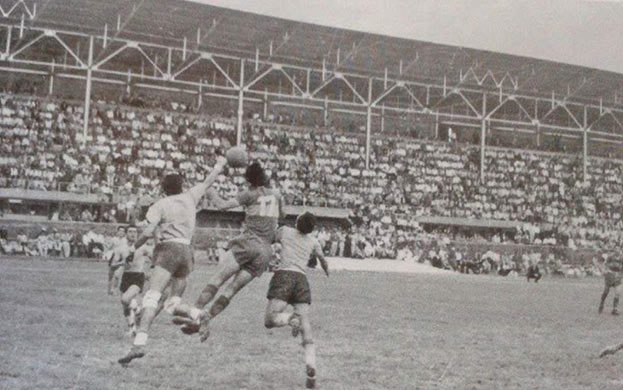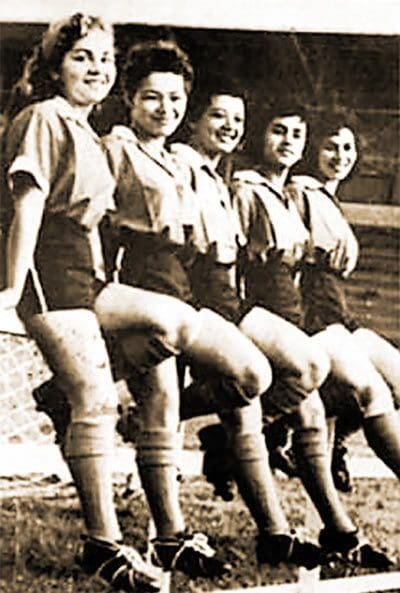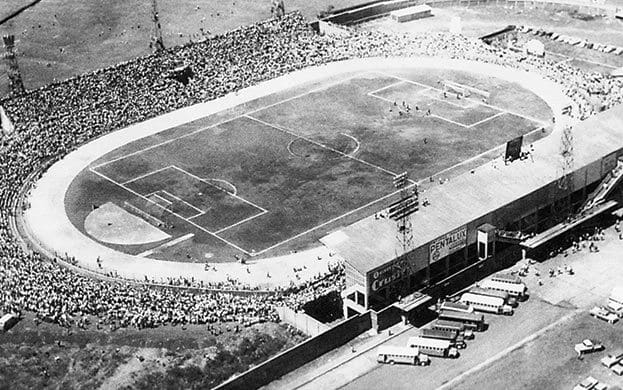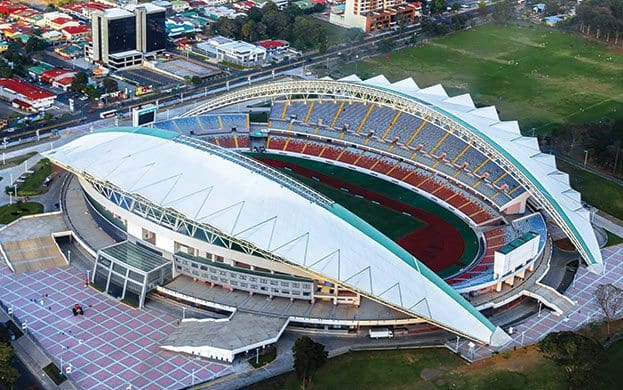
Soccer in Costa Rica Debut in 1899
 Soccer in Costa Rica: The game of soccer was apparently introduced to Costa Rica in 1899, judging from this news item on July 4 of that year in the newspaper La Opinión:
Soccer in Costa Rica: The game of soccer was apparently introduced to Costa Rica in 1899, judging from this news item on July 4 of that year in the newspaper La Opinión:
“On Sunday we were witnessing [the game of Foot-Ball] in la Sabana, played by members of our educated society. It appears to be a distraction that is both hygienic and a good deal of fun. ‘Very Well!’ ” (The last words were printed in English, apparently because the game came from English-speaking countries.)
“It appears to be a distraction that is both
hygienic and a good deal of fun.”
An update followed on July 6 in La Prensa Libre, noting the dangers that this game posed to passersby:
“Good and convenient is the game of balls for children because it, more than anything, develops their musculature and gives life to their organism. But to play these games some place should be found like the plazas or La Sabana, and not public streets where there are many passersby. We know that on Tuesday there were various people hit by these balls. The police should take care of this.”

Alajuelense welcomes Botafogo of Brazil in a 1957 match at the National Stadium.
The press went on to emphasize the dangerous threat to public order posed by this new-fangled game of kickball:

Mario Murillo playing goalie against the Wacker’s in 1954
“[Again] we refer to the police the groups of children that form in public streets to play ball, with the imminent danger to the noses of passersby; at the corner of La Granja it was impossible to pass; it is apparent that the children from those parts have left school to attend the game; what big matches are played there.”
By August 1899 the press was noting the increased sophistication of these newbies to this sport:
“[The game] of [foot-ball] that took place Sunday at la Sabana demonstrates that the sportsmen have become bigger fans of this entertainment and have more skill at this sport. [In English:] Oy yes, very well, all right. – God save the queen.”
One of the great differences between soccer and other sports of the time was that it leveled the playing field between the rich and the working class — unlike, say, polo.
It was a game that students from all over the country who attended the Liceo de Costa Rica, the country’s primary education center, could take back to their hometowns. This gradually turned futból into a national sport.
Related Costa Rica World Cup articles
Profile Keylor Navas Costa Rica Goalie
Costa Rica Soccer Fans on Fire
Costa Rica 2018 World Cup Chances

Costa Rica women soccer players-1960
On Christmas Day 1899, football got a boost when President Rafael Iglesias Castro attended a game between a Costa Rican and an English team, giving the game a new sense of legitimacy. (In case you’re wondering, the English won.)
Soccer, one correspondent argued at the time, was a more educated, civilized form of public entertainment than bullfighting or spectacles with barbaric masks accompanied by heavy consumption of alcohol.
The sport took off, and Costa Rica soccer never looked back.
To learn more about Costa Rica Soccer, Wikipedia is a good place to visit.

A game played in Barrio Mexico in the early 1920s, with President Julio Acosto García in attendance.

Costa Rica Soccer, The old Costa Rica National Stadium, 1960.

Costa Rica’s new National Stadium in La Sabana Park, San José.
